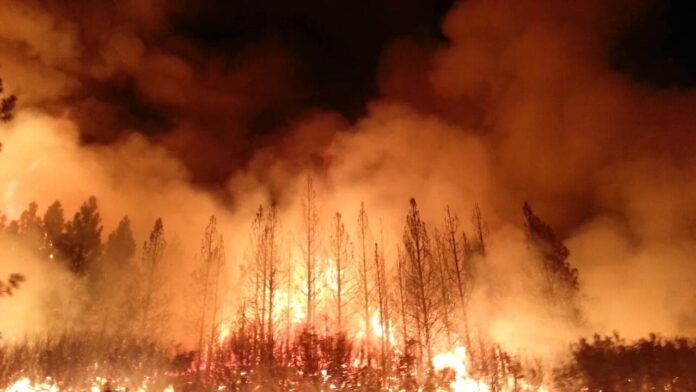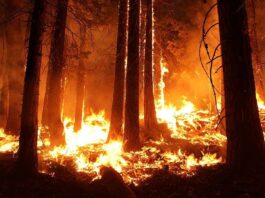Natural disasters are sudden events that cause widespread destruction, loss of life, and other damage to human beings. The worst natural disasters are the ones that kill the most people as well as cost a lot of damage. Some natural disasters are difficult to predict, and they are all impossible to stop which is why some people always suffer.
Natural disasters fall into three broad groups including those caused by earth movements, weather-related disasters, and extreme weather events. As for this year, there have been a great number of large natural disasters occurring in many countries especially Japan and Indonesia. As a matter of fact, 2018 is the year with the most natural disasters ever recorded. There are many countries that have been affected by those disasters on both small and large scales.
Some may think that tsunamis and typhoons are the worst natural disasters in the world. Actually, there is more than that that we bring you today. Below, you will find all the natural disaster causes that happen throughout the world with brief descriptions for each of them. Take a read and let us know your thought on which one is the worst natural disaster on earth.
1Natural Disasters Caused by Earth Movements
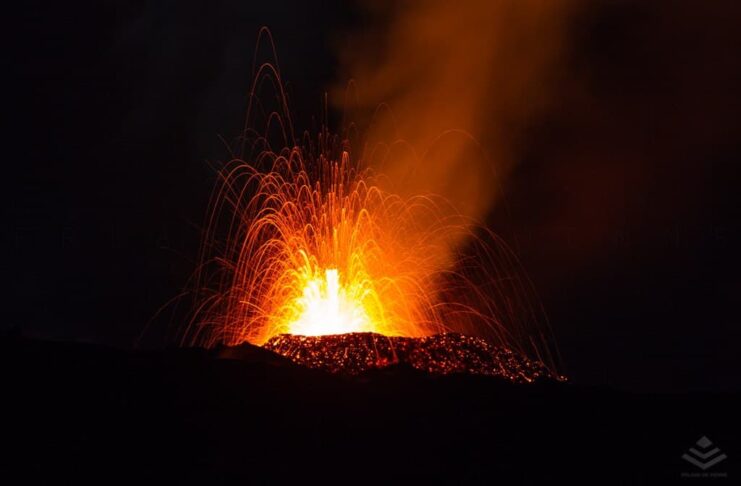
This type of natural disaster occurs with the minimum amount of warning, but is unpredictable and impossible to stop. The only thing that the countries that suffer from these disasters can do is take appropriate action to limit the damage. Natural disasters caused by the movements of the earth occur every year, and bigger and stronger somehow.
Earthquake
Earthquake is one of the types of natural disasters that we are all aware of at some point. Such tragedy occurs as a result of the sudden release of energy in the earth’s lithosphere (rigid outer part of the earth). Earthquakes manifest themselves by shaking and displacing or disrupting the ground. Also, earthquakes range from very light that no one notice to their highest peak that can destroy cities and kill people.
There are two main causes that provoke earthquakes: natural causes and human causes. For natural cause, it is usually seismic waves which are waves of energy that travel through the Earth’s layers. Such waves also cause volcanic eruptions, magma movements, large landslides, etc. As for the human cause, that includes mine blasts, nuclear tests, and similar activities that involve explosions.
Earthquakes can also lead to other natural disasters like tsunamis, volcanic activity, and landslides. The strength of an earthquake is usually measured using the moment magnitude scale. The most powerful earthquake in history was at magnitude 9.0 which occurred in Japan in 2011. The measurement of the earthquake scale of damage ranges as follows:
Earthquake Magnitude
- 2.5 or less: Very small number of people can feel it, it is more like a normal event as part of the earth’s movement.
- 2.5 – 5.4: People can feel the earth shakes, and earthquake at this scale only causes minor damage.
- 5.5 – 6.0: When an earthquake reaches this scale, it may cause a lot of damage in populated areas.
- 6.1 – 6.9: An earthquake on this scale could cause a lot of damage in a very populated area. Around 100 cases of earthquakes at this scale occur each year.
- 7.0 – 7.9: This level of an earthquake is considered a major earthquake that causes a lot of damage. About 20 of earthquakes at this magnitude occur each year.
- 8.0 and above: It is a great earthquake that can totally destroy a lot of buildings and lead to tsunamis. Such an event only occurs once in every 5 to 10 years.
Limnic Eruption
Limnic eruption aka lake overturn is a rare type of natural disaster that does not commonly occur. Such a phenomenon is when carbon dioxide suddenly erupts from deep lake waters forming a gas cloud. This cloud is capable of suffocating wildlife, livestock, and humans in a very short duration. Scientists believe that earthquakes, volcanic activity, and other explosive events are the triggers for limnic eruptions.
There have been 3 cases of limnic eruptions so far at Lake Monoun, Lake Nyos, and Lake Kivu. The condition of the victims is all similar to one another such as blisters on the skin, vegetable damage, etc. The main consequence of this natural disaster is that it is unpredictable, and it wipes out lives within a few minutes. It has caused the extinction of some living creatures nearby the lake, and a lot of deaths as many as the whole village.
Tsunami
When there is an earthquake under the bed of the ocean or sea, it causes a tsunami. There are also factors that cause tsunamis such as volcanic eruptions, glacier calvings, meteorite impacts, and underwater explosions like detonations of underwater nuclear devices. A tsunami usually consists of huge waves that travel at great speed which hit the shore and wash away buildings and people’s lives.
There are two countries that have been damaged by tsunamis the most: Japan and Indonesia. The most destructive tsunami in history was the one that hit northeastern Japan on 11th March, 2011. The waves not only damaged buildings and houses but also devastated the nuclear power plant at Fukushima. As for Indonesia, the country was hit by the Indian Ocean tsunami on 26th December, 2004 after the second deadliest earthquake struck.
The scale of tsunami and its damage range from 1 to 12 as you can see below:
Tsunami Scale
- 1: It is the safest level that causes zero damage, and no one knows it occurs.
- 2: Slightly larger than the previous one, but it still causes no effect or damage.
- 3: A few people on the coast can see unusually large waves, but no damage is done.
- 4: Small vessels move slightly onshore, and the waves are also larger than usual.
- 5: At this level, the height of the wave can reach 1 meter and people will be scared and run to higher ground. There will be flooding in some facilities nearby the shores.
- 6: The height of the waves will rise up to 2 meters, and small vessels will move violently onshore. Some may crash strongly into each other while others overturn. Wooden structures nearby the shore will be damaged and flooded.
- 7: Waves will be as high as 4 meters, and many wooden structures will be damaged, demolished, or washed away. It can only flood the first floor of masonry buildings.
- 8: The height of the waves is still around 4 meters, but faster at speed. So some people may be hit and washed away along with wooden structures.
- 9: It is the destructive level where the waves are 8 meters high that can violently move large vessels ashore.
- 10: The wave’s height remains at 8 meters but at a greater pace that can destroy buildings and large vessels.
- 11: Devastating level, the height of waves rises up to 16 meters which causes damage to grade 5 in many masonry buildings.
- 12: It is the completely devastating level that damages and destroys properties on a large scale by waves at a height of 32 meters.
The only way to survive a tsunami is to immediately run for high ground or seek the upper floors of nearby buildings. A tsunami does not come as a surprise, people can observe and tell that there is a tsunami by the sucking sound and huge waves from the distance. Tsunamis are unpredictable, but everyone should always be cautious when they are in coastal areas of common tsunami regions.
Volcanic Eruption
Volcanic eruption is one of the deadliest natural disasters that cause deaths and damage to people. The easiest way to understand a volcano is that it is like a regular mountain but with a different core. It is the type of mountain that allows hot lava, volcanic ash, and gases to escape from a magma chamber below the surface.
A volcanic eruption occurs when hot materials from the earth’s interior are thrown out of the volcano. When that happens, lava, rocks, dust, and gas are the elements that come from the explosion. Every time there is a volcanic eruption, people are killed and houses are destroyed as the hot lava slides from the volcano. Sometimes the explosion is so big it provokes a tsunami which causes even more destruction.
There are three different types of volcanic eruptions including magmatic eruption, phreatomagmatic eruption, and phreatic eruption. The first type of volcanic eruption involves the decompression of gas within magma that propels it forward. The second type occurs when thermal contraction from chilling on contact with water. The last type is the ejection of entrained particles by the superheating of steam via contact with magma.
The largest volcanic eruption was the explosion of Mount Tambora in Indonesia back in 1815 with the scale of 7. Just like earthquakes, we also have a scale from 0 to 8 to measure the strength of the eruptions. The measure of volcanic eruption is VEI (Volcanic Explosivity Index), and it goes as follows:
Volcanic Explosivity Index
- 0 (Effusive Level): the ejected material covers less than 10,000 cubic meters. Such eruption is not felt except by very few under specially favorable conditions.
- 1 (Gentle Explosion Level): the ejected material covers more than 10,000 cubic meters. This level is only felt by a few people at rest, especially on the upper floors of buildings.
- 2 (Explosive Level): the ejected material covers more than 1,000,000 cubic meters. This level also involves an earthquake that causes rumbling that people indoors can feel.
- 3 (Severe Explosion Level): the ejected material covers more than 10,000,000 cubic meters. If it occurs at night, some will wake up due to the rumbles of dishes, windows, and doors.
- 4 (Very Severe Explosion Level): the ejected material covers more than 100,000,000 cubic meters. At this level, not only windows and doors but furniture is also moved by the shaking of the ground.
- 5 (Violent Explosion Level): the ejected material covers more than 1,000,000,000 cubic meters. Everyone will run outdoors, and poorly built structures will be damaged.
- 6 (Terrific Explosion Level): the ejected material covers more than 10,000,000,000 cubic meters. If the lava does not damage, the quake from the earth still can make the buildings collapse.
- 7 (Super-Terrific Explosion Level): the ejected material covers more than 100,000,000,000 cubic meters. All buildings are considerably damaged, and there will be cracks on the ground.
- 8 (Mega-Terrific Explosion Level): the ejected material covers more than 1,000,000,000,000 cubic meters. It is the highest level, and almost all structures fall with wide cracks in the ground.
2Natural Disasters Caused by Weather
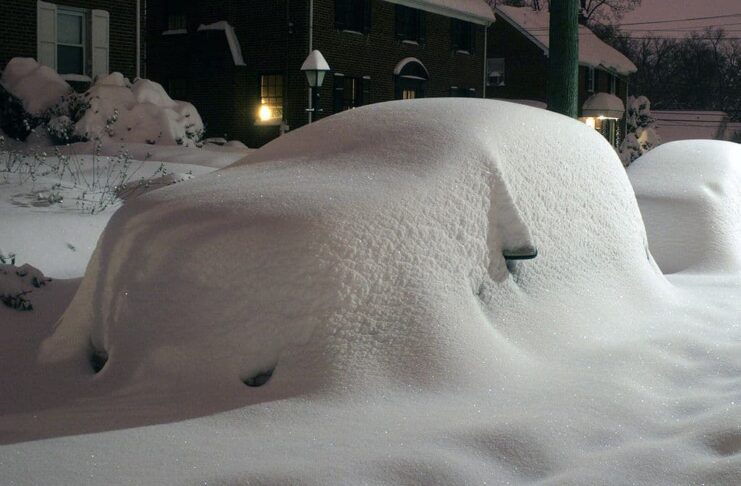
Weather-related disasters are the ones happen in accordance with the changes in the weather. Just like the previous type, this type of disaster is unpredictable and unstoppable. The only good thing is that there are some degrees of warning based on the season and changes in the weather. Mostly, different types of storms are in this category.
Blizzard
A blizzard is a severe snowstorm that lasts up to 3 hours or more with a wind speed of at least 56km/h. Blizzard often brings large amounts of drifting snow along with severe cold temperature that can paralyze the regions for days. The thing is it usually occurs where snowfall is unusual or rare in a very unexpected way.
It might be just a storm and a wind, but a blizzard can cause damage and death as well. Blizzard usually brings a large amount of snow that can collapse the roof of the house which result in injuries. The snow can also weigh down tree branches or the entire tree that can break and fall onto the house. Plus with high winds, a blizzard is one bad natural disaster that we should take precautions at all times.
Cyclone
You can characterize cyclones by their inward spiraling winds that rotate around a strong center. The cause of cyclones is the combination of strong winds driving water onshore and the lower atmospheric pressure. The main effects of cyclones are heavy rain, strong wind, large storms, surges at landfall, and tornadoes. Different sizes of cyclone also cause different scales of destruction.
There are two main types of cyclones including surface-based types and upper-level types. Surface-based type includes an extratropical cyclone, subtropical cyclone, and tropical cyclone, while upper-level type consists of polar cyclone and TUTT cell. The interesting thing is that cyclone storms are also common on Jovian planets like Small Dark Spot on Neptune. Looks like the earth is not the only planet that cyclones have traveled to.
Flood
Flood is one of the worst natural disasters to ever occur on earth. It is an overflow of water on land which is usually dry with too much amount caused by heavy rains, storms, etc. Some other causes of flood include the breaking of dams and improper drain management. The deadliest flood was in China back in 1931 which killed between 2,000,000 and 4,000,000 people. The damages from floods result in the loss of lives, habitats, livestock, and the damages in agricultural products.
Flood is one unexpected and unpredictable natural disaster, and it has killed people and destroyed many properties in many parts of the world. There are 3 levels of flood including minor flood, moderate flood, and major flood. Also, there are 2 main methods to control flood namely reforestation, construction of levees, dams, reservoirs, and channels diverting floodwater. Residents in flooding areas often face a lack of clean drinking water and food which can lead to deaths if not rescued on time.
Hurricane
Not different from common storms, a hurricane is a storm with the violent wind in the Caribbean. In another word, a hurricane is a tropical cyclone that forms over tropical or subtropical waters. In some intense situations, a hurricane can consist of strong thunderstorms with a well-defined surface circulation with a wind speed of 64kph or higher.
The dangers caused by hurricanes can be waves that can be harmful to mariners and coaster residents and visitors. When the waves break along the coast, they can produce deadly rip currents even at large distances from the hurricane itself. Powerful winds also come along with the waves as well as heavy rains that can lead to a flood. A hurricane in bad weather usually lasts between 12 and 18 hours, or up to 24 hours with diminishing intensity.
Tornado
A tornado is a rapidly rotating column of air that is in contact with both the surface of the earth and a cumulonimbus cloud. Tornadoes come in many shapes and sizes, and they travel at a speed no more than 110 miles per hour. There are 3 types of tornadoes including multiple vortex tornadoes, landspout, and waterspouts.
These fast winds can rip buildings off their foundations, and even deform large skyscrapers sometimes. However, there are still some methods that people can use to protect themselves from tornadoes. When there is a warning, residents in the area must go to the basement or an interior first-floor room of a sturdy building.
To measure the intensity and damage of tornados, meteorologists use Fujita Scale or Fujia-Pearson Scale. The scale associated with wind speed and the potential damage from tornadoes, it ranges from 0 to 5.
Fujita Scale
- F0: The wind speed is 64 – 116kph, and it causes light damage to chimneys and tree branches.
- F1: Its wind speed is 117 – 180kph, and the tornado at this speed causes moderate damage. It can peel surface off roofs, push moving vehicles off the roads, etc.
- F2: The speed is up to 181 – 253kph which significantly damages mobile homes and snaps or uproots large trees.
- F3: Tornado’s speed increases to 254 – 332kph which leads to severe damage to houses and trees. Tornadoes at this speed can also overturn trains.
- F4: With speeds of 333 – 418kph, the tornadoes can cause devastating damage that can throw cars and even generate large missiles.
- F5: The biggest scale of a tornado is with a speed of 419 – 512kph that sucks up and destroys everything in its way.
3Natural Disaster Caused by Extreme Weather
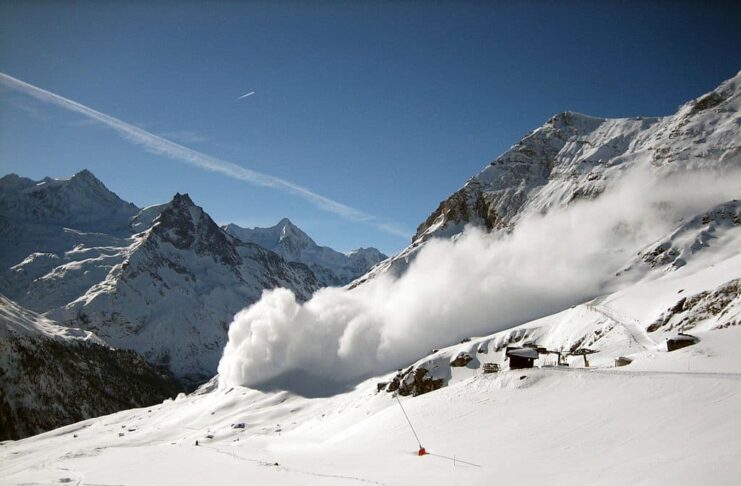
As for the consequences of extreme weather being too hot or too cold, there are also some disasters resulting from it. When the weather is not as usual as it should be, there will be a lot of bad impacts on many different parts of the world. Usually, some disasters of this type last very long and causes a lot of deaths.
Avalanche / Landslide
Avalanche occurs when a large mass of snow, rocks, or debris suddenly detached from a mountainside which falls or slides down. As for landslide, it happens when a huge part of the mountain detached and comes down. However, these two natural disasters are both harmful and dangerous because they usually occur in a very sudden way.
Both of these disasters cause property damage on a very large scale along with deaths.
The cause of landslides are by soil erosion, earthquakes, and volcanic activity, and the causes are also similar to avalanches. People who live nearby the mountains as well as skiers are the common victims of these disasters. Thousands of people have been killed each year, and Canada is the country with the most avalanche.
Famine
Famine is one of the worst natural disasters resulting from extreme weather that leads to the scarcity of food. The factors that cause famine are crop failure, climate change, insect plagues, and plant diseases. As for man-made causes of famine, they include war, inflation, population imbalance, etc. Famine usually follows by regional malnutrition, starvation, epidemic, and increased mortality.
Currently, there are 4 countries that are living on the brink of famine including Yemen, Somalia, South Sudan, and Nigeria. The total number of people who are suffering from this unfortunate event is about 20 million, and kids are always the first to go. There are several organizations and projects created to assist those who suffer from famine, and there will be more help, hopefully.
Heat Wave
A heat wave is a period of extremely hot weather that comes with high humidity that usually occurs in oceanic climate countries. Severe heat waves can lead to catastrophic crop failures, deaths from hyperthermia, and widespread power outages due to increased use of air conditioning. Not to mention the danger from heat and sunlight that overheat the human body, a heat wave is one dangerous natural disaster on earth.
Heat waves occur in many parts of the world for centuries, but the worst heat wave was in Africa. It was the hottest temperature in Africa as well as the hottest temperature in the world. The unfortunate place was Ouargla in Algeria which suffered from heat waves at the temperature of 124.3 degrees which equals 51.3 Celsius. Then it soared up to 128.7 degrees in late June back in 2017 in Iran.
Wildfire
Wildfire is a fire in an area of combustible vegetation that occurs in the countryside of a rural area. There are 4 major causes of wildlife including dry climate, drought, lightning, and volcanic eruption. Apart from those, arson, discarded cigarettes, power-lined arcs, and sparks from equipment are also the causes. There are different types of wildlife including brush fire, bush fire, desert fire, forest fire, grass fire, hill fire, peat fire, vegetation fire, and veld fire.
Wildfire can cause damage to property and human life as well as affect the environment and ecosystem. The main effect of wildlife is air pollution which is very harmful to human health. Also, the effect on the landscape is long-lasting which is very bad for the animals and wildlife. The bigger the fire, the longer it takes to put out the fire, and of course, the more damage it causes.
The biggest wildlife was the Siberian Taiga fires in Russia that burned about 47,000,00 acres. The Satellite images of the fire show Eurasia covered in smoke while the effects still exist today.
Related Post: Worst Tsunamis In History

